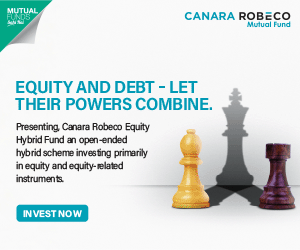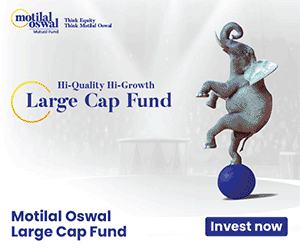How Sunk Cost Fallacy Affects Your Investments

Humans pride themselves on being the most rational beings. All of us believe that we are only capable of making rational decisions, at least for us our investments, and that is what we have been doing so far. If somebody told you otherwise, you will either mock them or furiously point towards the statistics, which you are convinced will speak in your favour. After all, humans can lie, but numbers and data does not and cannot lie. So hold on to your seats because what I am about to tell you could shock you a little (a lot, perhaps?). You are not as rational as you would like to believe and even you know that because you may have a few loss making investments, which you refuse to let go. The question is: why something so obvious is so hard to let go? You are making loss in an investment and you let go off the investment. Make further investments, churn profits and keep repeating the process. The investment cycle is this simplified. Then why some people make more losses than others? Why do some people find it so hard to let go?
Before we begin to answer these questions and you start to fervently deny these answers, let us go back in time a bit. Remember that time when a lot of us used to put alarms on our phone, wake up in the middle of the night, slyly switch in our computers, to play this bizarre farm game called Farmville? The game has lost its user base but is sustaining completely on Sunk Cost Fallacy. The users, when they started playing this game, it was just another virtual game. However, with time they built a virtual world, got connected to people exchanging gifts (virtual ones of course!) and were far too emotionally invested in it to stop playing it. Even they realized it is just patch of virtual grass but the idea of letting go simply didn’t occur. Why? Because they have already invested so much: time, effort, building their own world, growing their own vegetables and investing virtual money; it is simply easier to go on to avoid the sense of loss than face the loss. 50 million people were still playing in 2011 because they cannot let go of a bad investment, they simply have to carry on.
What are Sunk Costs?
Sunk costs include any costs that have been incurred and the recovery is unlikely. From this sunk cost comes the theory of Sunk Cost Fallacy which states that we are unable to let go of the “sunk costs” even the cost or investment is unlikely to be recovered. A quick example would, you bought movie tickets but you feel sick. The ticket is now sunk cost because you will not get a refund. Hence, you decide to go because you have already invested in the ticket. You went to the theater and you felt even worse. You have just given in to Sunk Cost Fallacy.
How Does this Influence Our Investment Decision?
Returning to the Farmville game, you knew the game was addictive and you are not getting anything tangible in return, you continued playing it. You had gone too far to come back from it. Or rather you were so emotionally invested that you ignored the rational implication. The same happens when we are investing. When you invest in Mutual Funds or directly buy stocks it is always with the expectation and anticipation that your investment will churn the maximum possible return. However, at times the times fail to perform, Mutual Funds may be able to generate returns, markets may be going through a bad phase and your investment suffers.
You are also aware that your investments will not recover and you will make losses. Rationally, you should have withdrawn by now because the investment is a sunk cost. Rather, you let the investment stay there, make further losses because as long as it invested you can still pin your irrational hopes of profit to it. You are also trying to shield yourself from the knowledge that you have actually made a loss. Hence, you let yourself be emotionally shielded rather than facing the reality of your loss. This is how Sunk Cost Fallacy works its way through our investments.
Emotional Attachment to Money
Let us assess the above situation once again. You have an investment where you are making losses but you stay invested because you believe that the situation will recover and so on. Now why do you keep believing and keep insisting despite the objective facts being otherwise? We are very scared to gamble with our money. We refer to it as ‘OUR money’ because we associate a sense of ownership and possessiveness. That is why your financial advisor was very easily able to tell you not to invest because he is not personally attached to the investment. The reason financial experts often stress on external advice is simply this: you will make emotional decision, while an outsider with financial knowledge is more likely to make objective decision with your money.
Think along these lines. If instead of investing your money in this stock, this money was a gift from a friend would you not have taken it out when you saw the drop? You would have and invested it elsewhere. You may also have gambled around a little to make some quick profits and enjoy the thrill of stock markets. You will simply go with the flow and not be attached to the money and not see it as a result of your hard work but rather as a free gift.
Dealing with Profits and Loss
Sunk Cost Fallacy is that one theory that has captured the imagination of Behavioral Economists for centuries now. It also sheds light upon how people view profits and losses. Behavioral Economist Dan Airley in his book ‘Predictable Irrational’ talks about the “Pain of Paying” which talks about how humans focus and assess the possible losses they will make rather than accounting the profits that they also might make. For example, a Mutual Fund scheme you have been generating an annualized return of 8%-10%. You are also hearing about this scheme which has been generating 20% but it is a relatively new scheme. You account for the losses that you will lose out on the returns accumulated and the investment altogether. However, you do not assess the profit. If you invest in this and instead of 20% it gives even 15% or 17% you will have a better investment than what you have now. Instead you let your investments remain as sunk costs.
The phenomenon of not responding to profits is built in because of a loss aversion system. We focus more on ways to avoid facing the losses we might make than focus on the profits we could possibly make if could get past the loss.
Conclusion
Now come to think of it, we are not all that rational. All of us have ordered terrible food at a takeout and ate the entire meal because we have ordered it and we shall eat it. It hardly matters to us that we run the risk of falling sick. The only thing that matters is we paid. All of us have watched a movie which turned out to be terrible but none of us really thought of leaving the theater. Come to think of it our lives have been a series of falling for the Sunk Cost Fallacy. While some of them do not potentially harm you, just bore you immensely (a bad movie!), some of them have the power to affect your financial future. Hence, if you have been clinging to your bad investment because you are too emotional to let go, maybe this will change your mind. Also, this is why we keep insisting on availing the advice of financial advisors. They can actually save you when your investments are sinking, while you pretend it is actually sailing. Get a portfolio review done and stop playing Farmville already, the patch, the corn, the strawberries, the currency and your neighbors do not really exist.
Queries
-
What is the benefit of mutual fund STP
Aug 29, 2019
-
How much to invest to meet target amount of Rs 2 Crores
Aug 26, 2019
-
Can I achieve my financial goals with my current mutual fund investments
Aug 24, 2019
-
Can you tell me return of various indices
Aug 19, 2019
-
What would be the post tax return on different investments
Aug 18, 2019
-
Which Principal Mutual Fund scheme will be suitable for my retirement corpus
Aug 16, 2019
-
What is the minimum holding period for availing NCD interest
Aug 4, 2019
Top Performing Mutual Funds
Recommended Reading
Fund News
-
Kotak Mahindra Mutual Fund launches Kotak Nifty200 Value 30 Index Fund
Jan 15, 2026 by Advisorkhoj Team
-
Bandhan Mutual Fund launches Bandhan Silver ETF FOF
Jan 12, 2026 by Advisorkhoj Team
-
Bandhan Mutual Fund launches Bandhan Gold ETF FOF
Jan 12, 2026 by Advisorkhoj Team
-
The Wealth Company Mutual Fund launches The Wealth Company Gold ETF FOF
Jan 9, 2026 by Advisorkhoj Team
-
Mahindra Manulife Mutual Fund launches Mahindra Manulife Innovation Opportunities Fund
Jan 9, 2026 by Advisorkhoj Team














